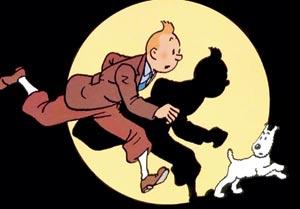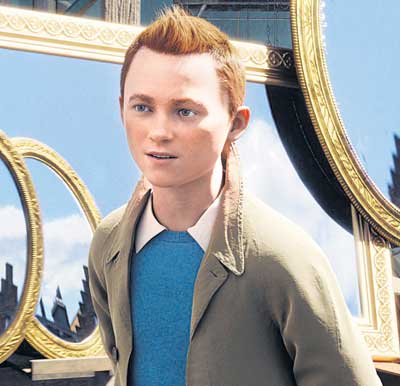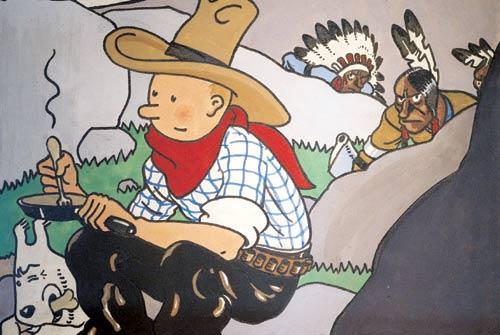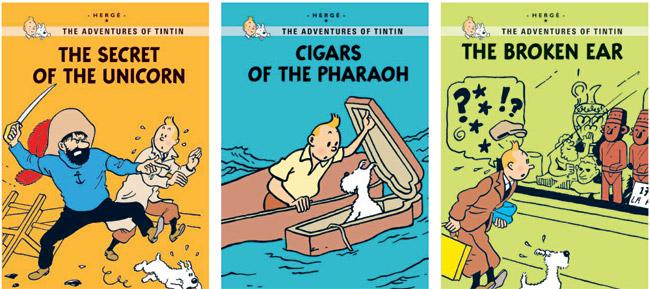Tintin, the amazing young reporter and sleuth with the unforgettable quiff created by Georges Remi, better known as Hergé, appeared for the first time in Jan 10, 1929 in the comic strip called "Le Petit Vingtième", together with his loveable, trusted canine partner, Snowy. A look at some interesting facts and trivia about this timeless character, who went on to appear in several forms of media over the years...

Tintin
Tintin, the amazing young reporter and sleuth with the unforgettable quiff created by Georges Remi, better known as Hergé, appeared for the first time in Jan 10, 1929 in the comic strip called "Le Petit Vingtième”, together with his loveable, trusted canine partner, Snowy. A look at some interesting facts and trivia about this timeless character, who went on to appear in several forms of media over the years...
ADVERTISEMENT

Tintin and Snowy
>> Belgian cartoonist Georges Prosper Remi, known by his pen name Hergé partly based Tintin on his own brother Paul.
>> Hergé also drew inspiration from the protagonist of his first comic strip Totor for Tintin's characterization
>> Since its first appearence, Tintin comics have been published in more than 70 languages with sales of more than 200 million copies worldwide.
>> Tintin was also transformed into a movie titled 'The Adventures of Tintin: Secret of the Unicorn' in 2011 directed by legendary Hollywood director, Steven Spielberg.

A still from 'The Adventures of Tintin: Secret of the Unicorn'
>> Hergé, who started drawing as a hobby, sketched out scenes from daily life along the edges of his school books. Some of these illustrations were of German soldiers, because his four years of primary schooling at the Ixelles Municipal School No. 3 coincided with the First World War, during which Brussels was occupied by the German army.

>> Hergé developed a love of cinema, which influenced his work as a cartoonist in later years. He favoured Winsor McCay's Gertie the Dinosaur and the films of Charlie Chaplin, Harry Langdon and Buster Keaton.
>> Many parts of Brussels have played an integral role in Tintin. Its creator, Hergé (née Georges Prosper Remi) belonged to Belgian capital. It's also home to Musée Hergé, a futuristic building that a must-visit for all fans.
>> Two 'The Adventures of Tintin' comic books -- 'Seven Crystal Balls' and 'Prisoners Of The Sun' were adapted for a stage play in 2010 and performed at the Summertime Festival at Prithvi Theatre. Elements from other 'Tintin' books were also incorporated.
>> A Hindi translation of 'The Adventures of Tintin' comic book series hit book stores in 2011. Tintin's well-known catchphrase 'Great Snakes' was translated as 'Baal ki khaal'. His four-legged companion Snowy was rechristened Natkhat and detectives Thomson and Thompson were renamed Santu and Bantu.

The cover page of 'Tintin Congo Mein', the Hindi translation of 'Tintin in Congo'
>> The comic book 'Tintin in Congo' attracted controversy in 2009, when a Congolese accountant named Bienvenu Mbutu Mondondo claimed that the work is propaganda for colonialism and amounts to "racism and xenophobia". The book was later banned for children over racism fears in 2011.
>> 'The Adventures of Tintin: Secret of the Unicorn' went head-to-head with Ranbir Kapoor starrer 'Rockstar' in the box-office in 2011 and was touted by many as the highest opener in India. The film also bagged the Golden Globe for best animated film.

'The Adventures of Tintin' comics - 'The Secret of the Unicorn', 'Cigars of the Pharoah' and 'The Broken Ear'
>> A big Tintin fan, Steven Spielberg bought the international movie rights to the character in the early 1980s itself.
>> Herge's personal life also affected the series; 'Tintin in Tibet', perhaps his most cerebral and emotional story, was heavily influenced by his nervous breakdown.
>> There have been exhibitions, festivals and musicals galore in the honour of Tintin. The Belgian Government has also released Tintin coins.
>> The comic strip series has been admired for its clean, expressive drawings. Its engaging plots straddle a variety of genres: fantasy, mysteries, political thrillers, and science fiction.
>> Hergé himself features in several of the Tintin comics as a background character.
 Subscribe today by clicking the link and stay updated with the latest news!" Click here!
Subscribe today by clicking the link and stay updated with the latest news!" Click here!






